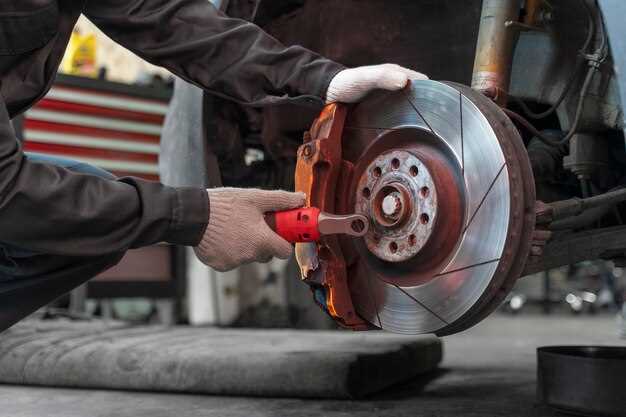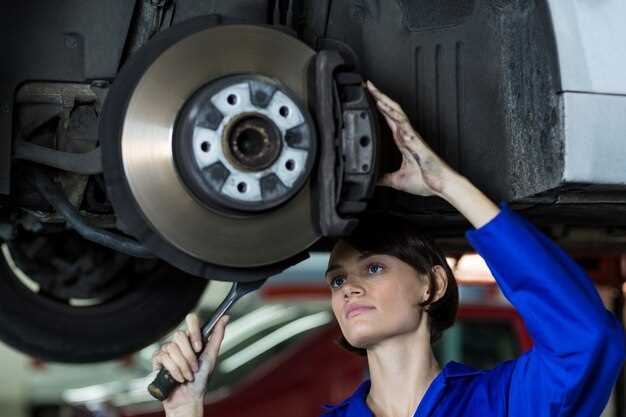
Ensuring the safety and performance of your foreign car relies heavily on regular maintenance, particularly when it comes to the brake system. One of the key components of this system is the brake pads, which experience wear and tear over time. Understanding the timing for replacing these pads is essential for maintaining optimal braking performance and preventing expensive repairs.
Most manufacturers recommend replacing brake pads every 30,000 to 70,000 miles, but this can vary significantly depending on driving habits, the type of vehicle, and the quality of the brake pads used. Factors such as frequent hard braking, stop-and-go traffic, and the environmental conditions in which you drive can accelerate pad wear. Consequently, monitoring the performance of your vehicle and recognizing the signs of worn brake pads can make a substantial difference in ensuring safety on the road.
Moreover, foreign cars often come equipped with advanced braking technologies that require specific types of brake pads. Understanding the nuances of your vehicle, including its make and model, will help you better assess when it’s time for a replacement. Routine inspections and being attentive to warning signs, such as squeaking noises or reduced braking efficiency, will empower you to make informed decisions regarding your car’s brake maintenance.
Signs Indicating When to Replace Brake Pads
Replacing brake pads in a timely manner is crucial for maintaining vehicle safety and performance. Several signs can help identify when it is time to replace brake pads.
1. Squeaking or Screeching Noises: If you hear a high-pitched squeaking or screeching sound when braking, it typically indicates that the brake pads have worn down to a level where the wear indicators are alerting you. This noise is often the first sign that replacement is necessary.
2. Grinding Sounds: A harsh grinding noise may suggest that the brake pads are completely worn out and the metal backing is now in contact with the rotor. Continuing to drive in this condition can cause significant damage to the brake system.
3. Vibration or Pulsation: If the brake pedal vibrates or pulsates during braking, it could signal uneven wear of the brake pads or a warped rotor. This issue should be inspected immediately to assess whether a full replacement is needed.
4. Reduced Braking Performance: If you notice a longer stopping distance or an overall decrease in braking efficiency, it may indicate worn brake pads. This reduction in performance can compromise safety, necessitating an immediate examination.
5. Brake Warning Light: Many vehicles come equipped with a dashboard warning light that activates when the brake system detects issues, including worn brake pads. If this light appears, it is vital to check the brakes promptly.
6. Physical Inspection: Regularly inspecting your brake pads can provide insights into their condition. If the pads appear thinner than ¼ inch or have noticeable irregularities, it’s time for a replacement.
7. Pulling to One Side: If the vehicle pulls to one side when braking, it may indicate uneven wear of the brake pads or issues with the braking system. This situation requires immediate attention and possible pad replacement.
By being aware of these signs, drivers can ensure safer operation of their vehicles and prevent further damage to the brake system through timely brake pad replacement.
Recommended Replacement Intervals for Specific Foreign Car Brands

When it comes to maintaining the safety and performance of foreign cars, knowing the recommended brake pad replacement intervals is crucial. Below are some guidelines specific to popular foreign car brands.
BMW: Typically, BMW recommends checking brake pads every 30,000 to 70,000 miles. However, performance-driven models might require more frequent checks, around 20,000 to 30,000 miles, due to their sportier driving dynamics.
Audi: For Audi vehicles, it’s advisable to replace brake pads every 40,000 to 60,000 miles. Nevertheless, driving style and environmental factors can affect this interval, so regular inspections are essential.
Mercedes-Benz: Mercedes-Benz recommends replacing brake pads every 30,000 to 50,000 miles under normal driving conditions. High-performance models may see this interval shortened to around 20,000 miles, owing to their increased wear rates.
Volkswagen: For Volkswagen cars, the general recommendation is to replace brake pads every 40,000 miles. However, if the vehicle frequently encounters city driving conditions, conditions warranting more frequent replacement may arise.
Honda: While not exclusively foreign, Honda vehicles typically recommend replacing brake pads every 30,000 to 50,000 miles. Performance-oriented models may need replacement more often based on driving habits.
Subaru: Subaru models generally require brake pad replacement between 30,000 to 60,000 miles. Off-road enthusiasts or those who frequently drive in harsh conditions may need to check their brakes more regularly.
In conclusion, while these intervals provide a starting point, always consult the owner’s manual for your specific vehicle model and maintain regular inspections. Identifying signs of wear like squeaking or grinding sounds can prevent costly repairs and ensure safety on the road.
Impact of Driving Conditions on Brake Pad Longevity

Driving conditions play a significant role in determining the lifespan of brake pads. Various factors such as road type, driving style, and environmental conditions can lead to increased wear and tear on braking components.
Urban driving generally exposes brake pads to more frequent and abrupt stops compared to highway driving. In cities, stop-and-go traffic forces the brakes to engage and disengage repeatedly, generating more friction and heat, which accelerates wear. Consequently, drivers who predominantly operate in urban environments may need to replace their brake pads more frequently than those who drive mostly on highways.
Additionally, aggressive driving habits, such as rapid acceleration and hard braking, can further diminish the lifespan of brake pads. Drivers who engage in such practices subject their braking systems to excessive strain, leading to quicker degradation of the pads. Conversely, adopting a smoother driving style can enhance brake longevity by minimizing the force exerted during braking.
The type of terrain also affects brake wear. Hilly or mountainous roads require more braking to control speed while descending, increasing the heat generated in brake pads and rotors. In contrast, flat terrain generally allows for longer intervals between braking events, which can conserve the integrity of the brake components.
Environmental conditions, including temperature and moisture, are additional factors influencing brake pad durability. In regions with high humidity or frequent rain, moisture can lead to rust and corrosion of brake parts, which may necessitate more frequent replacements. Likewise, extreme heat can cause brake pads to overheat, resulting in reduced performance and expedited wear.
Overall, understanding the impact of driving conditions on brake pad longevity is essential for maintaining optimal vehicle performance and safety. Regular inspections and timely replacements based on usage patterns can ensure that brake systems remain effective and reliable.




